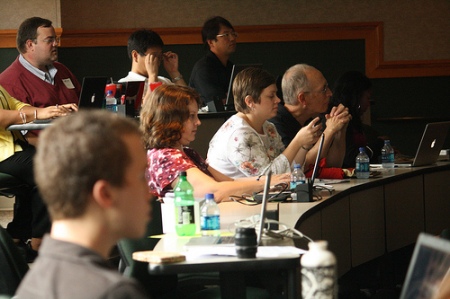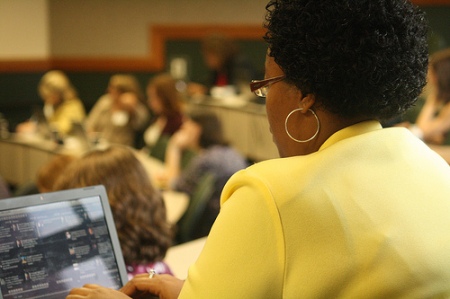Lizzy Nephew, a member of the Connect social media team, is also the editor of PRecedent, the newsletter for UGA’s PRSSA chapter. She solicited quotes from some of the students who attended Connect that really captured the day. Here’s her PRecedent article, reprinted with her permission.
Connect 2009: Integrating Social Media and Traditional PR
Connect ‘09 brought together PR professionals and students to discuss social media and its effect on traditional public relations. Check out what students learned at Connect ‘09:
Before engaging with your publics through social media, know your audience, have a specific goal in mind and build a strategy to execute that goal. You should not join social media just because it exists. You need to know how you can best use it to engage your publics and foster two-way communication.
As the PR professional, you are the spokesperson for your organization and need to know 100 percent about your brand. You have to live and breathe the brand and be fluent in the brand’s culture.
– Lesley Anne Dickerson
- Not everyone is connected within all of the social media networks including people our age. Young adults around the world are not as “connected” as UGA students.
- Online buzz is influencing offline buzz such as the growth of business by Naked Pizza, a restaurant in New Orleans, due to its Twitter account. The customer base grew tremendously.
- Gripe sites came before Facebook and Twitter. These gripe sites include Murder King, Wicked Wendy’s and other sites that bash companies. I didn’t even know it existed.
– Erica Holland
Connect taught me to look at social media in a strategic way. It is not about having the tools, it is about knowing how to use the tools. I encourage everyone to delve past the surface of social media. Look at how it can help the overall goal.
– Debbie Ebalobo
When it comes to social media, each organization must first decide why they need to have a presence and then how to best utilize the various platforms. These two considerations vary from organization to organization; however, there are certain guidelines that remain constant across the board:
1) People are talking about your brand in the social media space, whether you engage them or not.
2) Authenticity and transparency are essential for successful engagement.
3) Social media tactics should not serve as a replacement for traditional communication methods. Social media platforms should have a complementary role, not a supplementary one.
4) The same basic communication rules apply to social media. It’s not about changing public relations principles; it just provides new tools.
– Allison Brill










